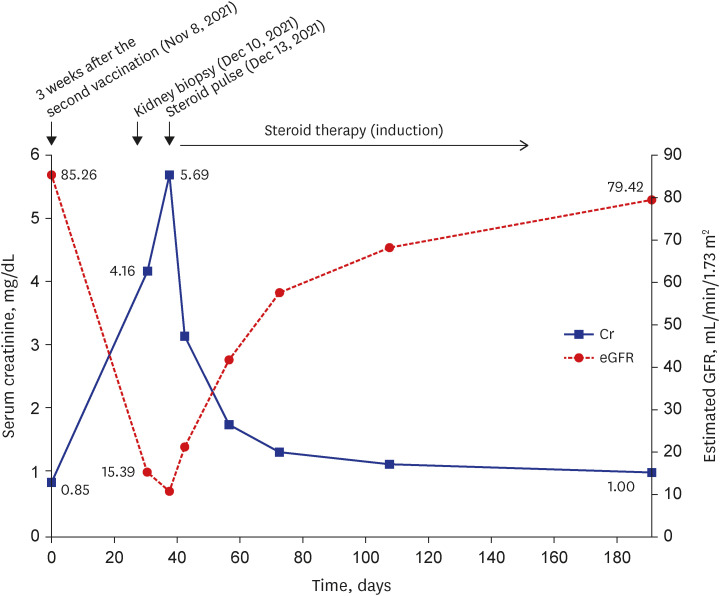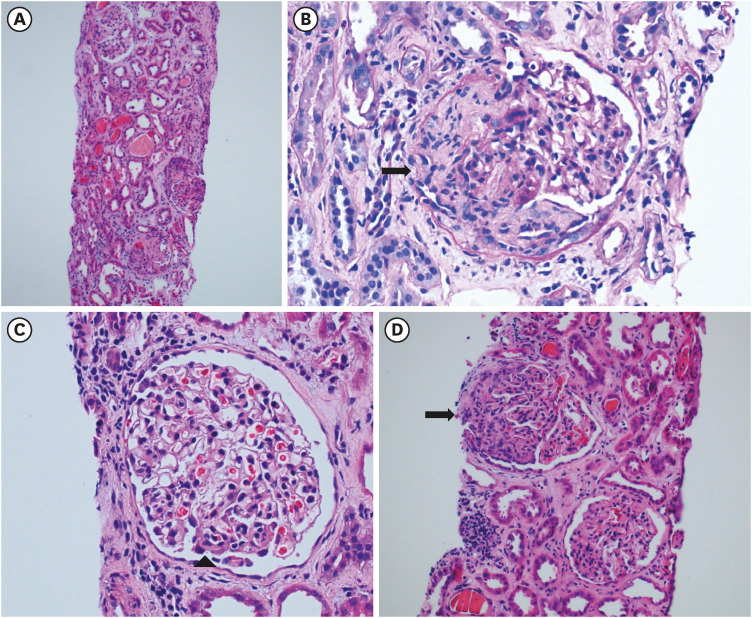1. Jara A, Undurraga EA, González C, Paredes F, Fontecilla T, Jara G, et al. Effectiveness of an inactivated SARS-CoV-2 vaccine in Chile. N Engl J Med. 2021; 385(10):875–884. PMID:
34233097.
2. Wagenhäuser I, Reusch J, Gabel A, Krone LB, Kurzai O, Petri N, et al. Bivalent BNT162b2 mRNA original/omicron BA.4-5 booster vaccination: adverse reactions and inability to work compared with the monovalent COVID-19 booster. Clin Microbiol Infect. 2023; 29(4):554–556. PMID:
36657489.
3. Polack FP, Thomas SJ, Kitchin N, Absalon J, Gurtman A, Lockhart S, et al. Safety and efficacy of the BNT162b2 mRNA COVID-19 vaccine. N Engl J Med. 2020; 383(27):2603–2615. PMID:
33301246.
4. Baden LR, El Sahly HM, Essink B, Kotloff K, Frey S, Novak R, et al. Efficacy and safety of the mRNA-1273 SARS-CoV-2 vaccine. N Engl J Med. 2021; 384(5):403–416. PMID:
33378609.
5. Jeffs LS, Nitschke J, Tervaert JW, Peh CA, Hurtado PR. Viral RNA in the influenza vaccine may have contributed to the development of ANCA-associated vasculitis in a patient following immunisation. Clin Rheumatol. 2016; 35(4):943–951. PMID:
26361945.
6. Caza TN, Cassol CA, Messias N, Hannoudi A, Haun RS, Walker PD, et al. Glomerular disease in temporal association with SARS-CoV-2 vaccination: a series of 29 cases. Kidney360. 2021; 2(11):1770–1780. PMID:
35372991.
7. Klomjit N, Alexander MP, Fervenza FC, Zoghby Z, Garg A, Hogan MC, et al. COVID-19 vaccination and glomerulonephritis. Kidney Int Rep. 2021; 6(12):2969–2978. PMID:
34632166.
8. Lim CA, Lee HS, Yoon S, Kim EJ, Seo JW, Koo JR, et al. Focal segmental glomerulosclerosis following the Pfizer-BioNTech COVID-19 vaccine. Kidney Res Clin Pract. 2022; 41(2):263–266. PMID:
35286791.
9. Park JS, Lee EY. Renal side effects of COVID-19 vaccines in patients with immunoglobulin A nephropathy. Kidney Res Clin Pract. 2022; 41(1):124–127. PMID:
35108771.
10. El Hasbani G, Uthman I. ANCA-associated vasculitis following the first dose of Pfizer-BioNTech COVID-19 vaccine. Nephron. 2023; 147(2):103–107. PMID:
35850104.
11. Kim BC, Kim HS, Han KH, Han SY, Jo HA. A case report of MPO-ANCA-associated vasculitis following heterologous mRNA1273 COVID-19 booster vaccination. J Korean Med Sci. 2022; 37(26):e204. PMID:
35790206.
12. Shakoor MT, Birkenbach MP, Lynch M. ANCA-associated vasculitis following Pfizer-BioNTech COVID-19 vaccine. Am J Kidney Dis. 2021; 78(4):611–613. PMID:
34280507.
13. So D, Min KW, Jung WY, Han SW, Yu MY. Microscopic polyangiitis following mRNA COVID-19 vaccination: a case report. J Korean Med Sci. 2022; 37(19):e154. PMID:
35578586.
14. Waldman M, Sinaii N, Lerma EV, Kurien AA, Jhaveri KD, Uppal NN, et al. COVID-19 vaccination and new onset glomerular disease: results from the IRocGN2 international registry. Kidney360. 2023; 4(3):349–362. PMID:
36996301.
15. Kim S, Jung J, Cho H, Lee J, Go H, Lee JH. A child with crescentic glomerulonephritis following SARS-CoV-2 mRNA (Pfizer-BioNTech) vaccination. Pediatr Nephrol. 2023; 38(1):299–302. PMID:
35854121.
16. Eisenberger U, Fakhouri F, Vanhille P, Beaufils H, Mahr A, Guillevin L, et al. ANCA-negative pauci-immune renal vasculitis: histology and outcome. Nephrol Dial Transplant. 2005; 20(7):1392–1399. PMID:
15855209.
17. Chen M, Yu F, Wang SX, Zou WZ, Zhao MH, Wang HY. Antineutrophil cytoplasmic autoantibody-negative pauci-immune crescentic glomerulonephritis. J Am Soc Nephrol. 2007; 18(2):599–605. PMID:
17215440.
18. Ronsin C, Georges M, Chapelet-Debout A, Augusto JF, Audard V, Lebourg L, et al. ANCA-negative pauci-immune necrotizing glomerulonephritis: a case series and a new clinical classification. Am J Kidney Dis. 2022; 79(1):56–68.e1. PMID:
34119564.
19. Chen M, Kallenberg CG, Zhao MH. ANCA-negative pauci-immune crescentic glomerulonephritis. Nat Rev Nephrol. 2009; 5(6):313–318. PMID:
19399019.
20. Li NL, Coates PT, Rovin BH. COVID-19 vaccination followed by activation of glomerular diseases: does association equal causation? Kidney Int. 2021; 100(5):959–965. PMID:
34534551.
21. Cagigi A, Loré K. Immune responses induced by mRNA vaccination in mice, monkeys and humans. Vaccines (Basel). 2021; 9(1):61. PMID:
33477534.
22. Turner JS, O’Halloran JA, Kalaidina E, Kim W, Schmitz AJ, Zhou JQ, et al. SARS-CoV-2 mRNA vaccines induce persistent human germinal centre responses. Nature. 2021; 596(7870):109–113. PMID:
34182569.
23. Pardi N, Hogan MJ, Weissman D. Recent advances in mRNA vaccine technology. Curr Opin Immunol. 2020; 65:14–20. PMID:
32244193.
24. Vojdani A, Kharrazian D. Potential antigenic cross-reactivity between SARS-CoV-2 and human tissue with a possible link to an increase in autoimmune diseases. Clin Immunol. 2020; 217:108480. PMID:
32461193.






 PDF
PDF Citation
Citation Print
Print




 XML Download
XML Download